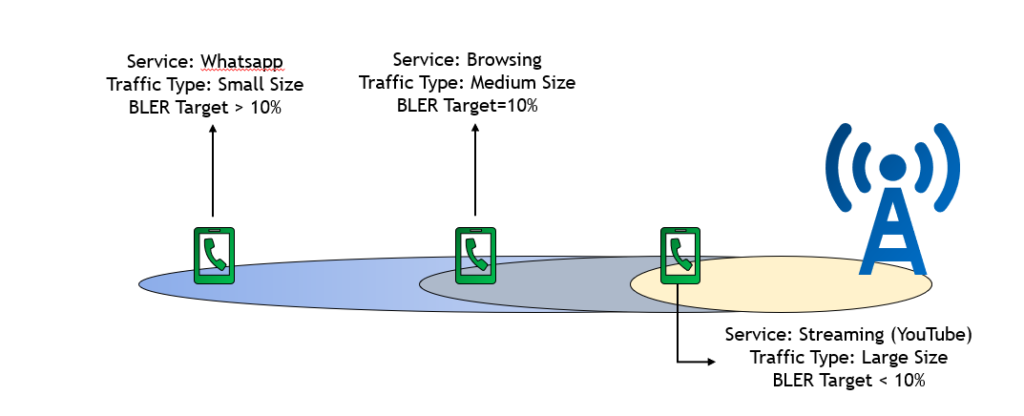This is the 2nd article for 5G Throughput Optimization where it is discussed how BLER target plays an important role in 5G link adaptation. The BLER target is usually around 10% based on specifications but it can be varied depending on the characteristics of the cell. This is explained in detail in this session along with the definition of BLER and its types.
5G Throughput Optimization Basics #2 – BLER Target: Fixed Or Variable?
BLER is Block Error Rate and it is basically the decoding failure rate of Transport Blocks or in simple words, the decoding failure rate of data blocks.
Naturally, higher BLER is bad and lower BLER is better but there are some additional rules that govern the BLER Targets.
The Scheduling uses the IBLER which is the Initial BLER based on the first retransmission instance.
If the user has a small traffic demand and it gets small number of resources then a retransmission overhead is also small
However, if the user has a high traffic demand, then it would get a large number of resources. Thus a retransmission of all those resources will create a much bigger overhead.
The usual BLER Target is around 10%. However, it has been observed that -Users in Good Radio conditions or with high traffic utilization (full buffer) perform better with lower BLER Targets -Users in Poor Radio conditions or with small packets perform better with Higher BLER Targets.

In case you have any queries or want to connect with Ali Khalid, please feel free to drop a comment under t or follow him on LinkedIn
Also, If you liked this article, then please subscribe to our Youtube channel – Our Technology Planet for more exciting stuff and videos.
Ali Khalid
Latest posts by Ali Khalid (see all)
- 5G Coverage Expansion Analysis – Find The Optimal 5G Coverage Threshold For Your Network - November 9, 2024
- 5G Coverage Expansion - November 9, 2024
- 5G SA Cell Search & Network Entry Matrix - July 18, 2023

How about if using realtime application likes WhatsApp Call or Zoom or Skype? Is there any threshold of BLER need to adjust ?
Hello Jamel,
Thank you for your comment.
Please follow the link below and post your question/feedback in Youtube comments section so that Ali Khalid will be able to answer.
5G Throughput Optimization Basics #2 – https://youtu.be/ccCeMXILGX4
I must say that this article on 5G throughput optimization is incredibly informative and well-written! The explanation of whether to use a fixed or variable BLER target is concise and easy to understand, making it accessible to both beginners and experts in the field. I appreciate the time and effort the author has put into creating such valuable content for the community. Thank you so much for sharing your knowledge and insights with us – it’s truly an asset for anyone looking to grasp the intricacies of 5G technology. Keep up the fantastic work!
Thanks for your kind words, Saint 🙂
Great work on the BLER image you posted. Makes it simple to understand the percentage better depending on distance(signal strength) and the type of data being pulled.
Thanks, Jay. Glad that it helps 🙂
I read your blog frequently and I just thought I’d say keep up the amazing work!
ZEPETO Mod Apk
Thank you, modtips.